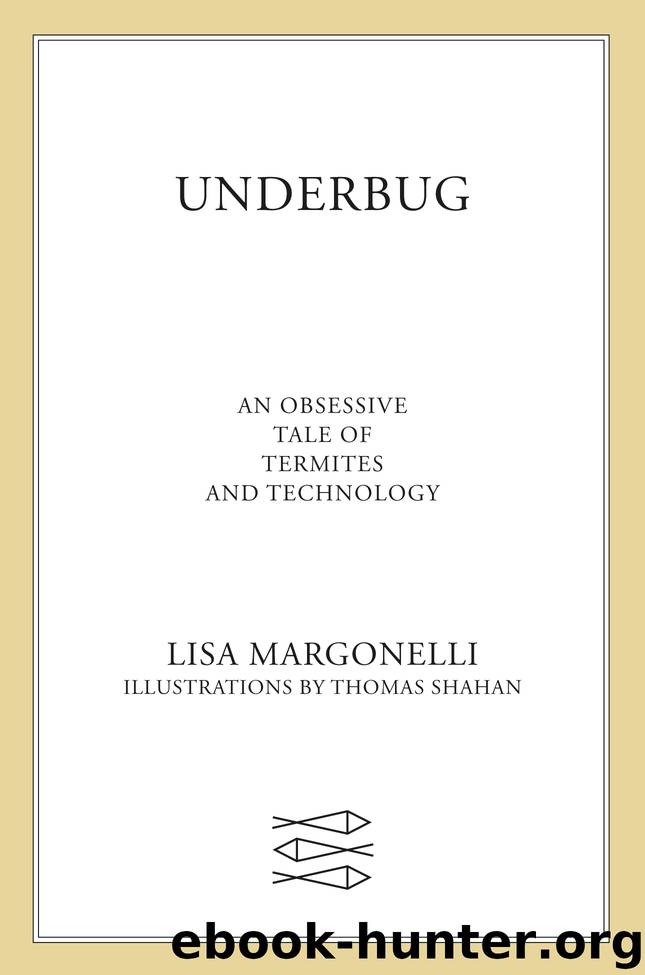Underbug by Lisa Margonelli

Author:Lisa Margonelli
Language: eng
Format: epub
Publisher: Farrar, Straus and Giroux
SIXTEEN
THE ROBOT APOCALYPSE
KIRSTIN, JUSTIN, AND RADHIKA submitted a paper about their TERMES robots to Science, which decided to put the TERMES robots on the cover of the February 14, 2014, issue. At the same time, the American Association for the Advancement of Science asked them to make their robots “perform” all day at a conference in Chicago. TERMES were going to be famous, but taking the robots out of their arena—with its particular lighting, sound, and electrical tape—was tempting fate. So Kirstin went along, and when the TERMES’s batteries froze in the Chicago cold, she was there to fix them. When someone dropped one, she fixed that too—even after she accidentally ripped the skin off her palm with superglue. Radhika’s observation that robots won’t be real until they don’t need PhDs for repairs seemed about right.
But frailty and unpredictability were not what the world saw when they looked at TERMES. One news report talked about “colonizing Mars,” while another deemed robots the future of construction, adding, “Let’s just hope those termite-style robots don’t become self-aware and cause carnage.” These imaginary robots were all-powerful. “Has the robot apocalypse arrived?” asked a video on Bloomberg News. Mixing footage of TERMES with old horror films, the video attributed near-magical powers to their algorithm, ending with the promise of building on Mars and rescuing humans before showing black-and-white film of a lightning strike with the reassuring words, “Not yet.”
I don’t think the roboticists were surprised by the tone of the reception. While synthetic biologists are presumed to be saving the world, roboticists nearly always have to endure some kind of Frankenstory. Science redefines itself almost daily, but public discussion of the morality and possible outcome of technology remains stubbornly anchored to Mary Shelley’s story from 1818—six years before Carnot wrote his theory.
* * *
THE ROBOTICISTS didn’t think much of the robot apocalypse as a story. One day over lunch, I’d listened as Radhika’s team discussed Michael Crichton’s 2002 bestseller Prey, about a swarming nanotech project that escapes from a government lab to terrorize the world. Radhika said she liked the parts of the book that dealt with self-assembly. For example, at one point the swarm of nanobots makes itself into a pinhole camera so that it can see. “I thought of proposing that we build that,” she said. She thought the second half of the book was terrible because it dropped the technology when the nanobots invaded humans and made them into horrible, almost supernatural beings.
Justin agreed. He had read the book hoping for a thoughtful discussion about swarm intelligence and self-assembly, but he thought the story was an outrage because it shifted the whole narrative away from the very real potential of the technology to the more religious concept of human evil.
“Oh, so it turned from a swarm story into a zombie one?” said Nils.
“Yeah, and the world ends,” Radhika said. Uninteresting, unreplicable, and empty: the battle between good and evil was the living dead of discussion topics for them. They would have
Download
This site does not store any files on its server. We only index and link to content provided by other sites. Please contact the content providers to delete copyright contents if any and email us, we'll remove relevant links or contents immediately.
Sapiens: A Brief History of Humankind by Yuval Noah Harari(14322)
The Tidewater Tales by John Barth(12627)
Mastermind: How to Think Like Sherlock Holmes by Maria Konnikova(7280)
Do No Harm Stories of Life, Death and Brain Surgery by Henry Marsh(6908)
The Thirst by Nesbo Jo(6882)
Why We Sleep: Unlocking the Power of Sleep and Dreams by Matthew Walker(6659)
Life 3.0: Being Human in the Age of Artificial Intelligence by Tegmark Max(5518)
Sapiens by Yuval Noah Harari(5325)
The Longevity Diet by Valter Longo(5043)
The Body: A Guide for Occupants by Bill Bryson(5031)
The Rules Do Not Apply by Ariel Levy(4911)
The Immortal Life of Henrietta Lacks by Rebecca Skloot(4552)
Animal Frequency by Melissa Alvarez(4430)
Why We Sleep by Matthew Walker(4395)
The Hacking of the American Mind by Robert H. Lustig(4341)
Yoga Anatomy by Kaminoff Leslie(4334)
All Creatures Great and Small by James Herriot(4272)
Double Down (Diary of a Wimpy Kid Book 11) by Jeff Kinney(4243)
Embedded Programming with Modern C++ Cookbook by Igor Viarheichyk(4143)
